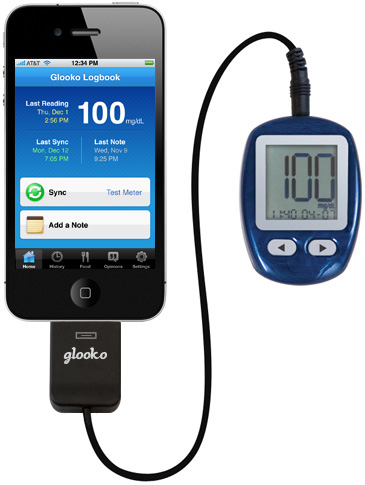 Last month the US Food and Drug Administration gave three medical devices 510(k) Class II clearances that aim to help people with diabetes better manage their condition via glucose meters that connect to apps on smartphones and tablet devices.
Last month the US Food and Drug Administration gave three medical devices 510(k) Class II clearances that aim to help people with diabetes better manage their condition via glucose meters that connect to apps on smartphones and tablet devices.
Palo Alto, California-based Glooko received its second 510(k) clearance for glucose monitoring logbook app and cable that connects various off-the-shelf meters to iPhones. The newly cleared app now includes the option for users to set goals to motivate healthy lifestyle choices. The five goals that can be added are limited to: Test blood glucose regularly; sync meter more often; keep readings within range; add meal tags to readings; and exercise more often.
Notably, with this second clearance the company also added a login credential feature to protect sensitive health information from unauthorized access during transmission. According to the company, now all data on the Glooko network is protected using the Secure Sockets Layer (SSL)protocol. Glooko also now forces the https:// standard for all mobile and web communication features, all data in the Glooko system is encrypted end-to-end using 256-bit Advance Encryption Standard (AES) encryption for message data both intransmission and storage.
Salem, New Hampshire-based AgaMatrix received an amendment to its 510(k) clearance from the FDA for its smartphone-enabled blood glucose meter, iBGStar, which has the distinction of being the first glucose meter with FDA clearance to directly plug into the iPhone. The iBGStar now can connect to the iPhone 5 and iPod touch 5th generation via an adapter or a connecting cable that allows it to connect to Apple's new Lightning connector, which replaced the old 30-pin connector dock Apple has since phased out.
San Francisco-based iHealth Labs, which is a subsidiary of China-based medical device company Andon Health, also secured another 510(k) for its iHealth Glucose Meter device. The company first revealed the smartphone-enabled blood glucose meter at the Consumer Electronics Show (CES) in Las Vegas in January 2012, where it displayed the tiny glucometer connected to both an iPad and an iPhone via the old 30-pin connector the legacy iOS devices use. iHealth's initial FDA clearance for the glucose meter described the device as having to physically connect to an iPhone or iPod touch to "complete its function", but the new 510(k) clearance describes it as connecting to those devices along with the iPad via Bluetooth. iHealth's companion app for the device is called iHealth Gluco-Smart, which works on iOS devices ranging from the iPhone 3GS to the iPhone 5.
The Wireless vital signs monitor (WVSM) from Athena GTX also secured a 510(k) clearance from the FDA during April. This device is meant to be used as a remote patient monitor for adult patients, and it includes: "a single or multi-parameter vital signs monitor for EGG, noninvasive blood pressure (NIBP) and SpO2." The devices uses a wireless connection to transmit data to a handheld device or PC. It is only meant to be used by trained healthcare providers.
















